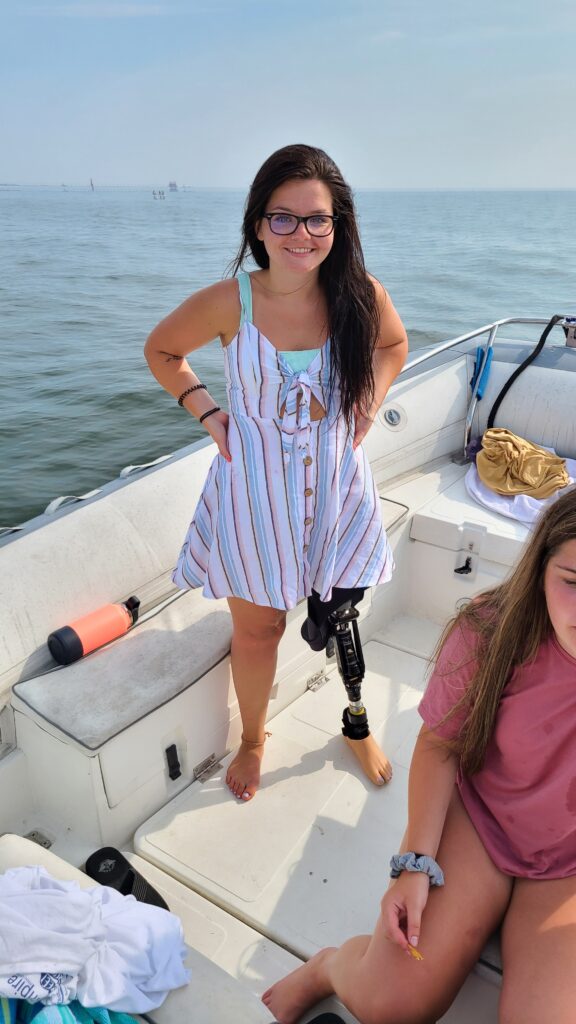By Rene Agredano
Whether becoming a caregiver or care receiver, most people lack the right tools to manage their new role. Without a strategy to cope with the emotional toll of a caregiving partnership, a once cherished relationship can disintegrate.
Janet is a good example. She never expected to spend her retirement years caring for her adult daughter, a double amputee. “This is the most draining thing in my life,” she says, while admitting that caregiving stole her independence and put her life on hiatus. But sharing those feelings with her daughter or even making time for herself is unimaginable.
“I have to lie to her to get away for a day,” she says. “Self-care is not an option.”

For the caregiver and care receiver, managing a life-altering medical condition leaves little time to do anything but get through the day. Taking a caregiving education class or getting counseling feels like wishful thinking to most. But according to caregiving expert Pamela D. Wilson, failure to obtain professional help can be devastating. However, if both parties commit to observe, communicate, and get help, heartbreak can be avoided. Here’s how.
Step 1: Watch for Trouble Ahead
Experiencing feelings of anxiety, guilt, and being overwhelmed daily are damaging to any partnership when left unchecked. Janet’s case is a good example. Her feelings of loss and resentment are warning signs that the relationship with her daughter is about to self-destruct.
“Feelings of frustration or burden by the caregiver or the care receiver indicate that difficulties may exist in a caregiving arrangement,” says Wilson. Committing to a regular check-in can acknowledge those feelings, identify problems, and keep relationships working.
“At the beginning of caregiving relationships, both individuals should talk about expectations and goals,” says Wilson. Without regular, honest discussions, caregiving relationships easily go off track.
Step 2: Communicate to Understand Both Sides
Wilson recommends weekly or more frequent check-ins to ensure that both individuals feel heard and valued. A process called Teach-Back makes it easier to understand and empathize with one another if there are no cognitive or mental health issues in the picture. In a Teach-Back, one person speaks, and the other person repeats what they heard. This continues until each person clearly understands the other. But it only works if both parties equally participate, resist the urge to assign blame, and have a sincere desire to resolve the issues.
Kearstin Miracle and her mom, Crystal, found a good balance after an auto accident put the Michigan teen on a path to leg amputation. While 15-year-old Kearstin struggled for independence, Crystal resisted the urge to become a helicopter mom.
“There were many things that I needed assistance with, whether I wanted it or not,” Kearstin recalls. “But other things my mom would let me try on my own and let me try until I asked for help.”
A relationship balance happened when the duo committed to open communication. “At 15, no mother and daughter really get along, but we eventually met in the middle,” Kearstin says. For instance, when Kearstin wanted to take a summertime resort job just one year after her accident, Crystal was nervous about allowing it. But she eventually agreed because her husband and sons worked on the same property. By quickly identifying their differences in expectations and goals, both women were happy with the outcome.

“We have tried hard to allow Kearstin to express when she needs help,” says Crystal. “We do offer our opinions sometimes, but ultimately she will either succeed or fail and will learn from the experience either way.” Giving her daughter room to try on her own strengthened their relationship and shaped Kearstin into a confident 18-year-old.
The Miracles are an example of the ideal partnership that occurs when each side identifies and shares solutions. “When issues are approached from a win-win situation—that sometimes requires compromise or looking at outside solutions—the caregiver and the care receiver feel like they are working together,” says Wilson.
Step 3: Get Help for the Team
Sometimes people play both roles in a caregiving arrangement. Gladys Young is an above-knee amputee who coped with her own health struggles while caring for her elderly father. The experience taught her the importance of communication whether getting care or receiving it.
“Communicate with each other,” she urges. And above all else, caregivers need to listen to the patient. “Let them talk. Hear what they have to say. Don’t try to change the way they think or function.”
Meanwhile, Janet struggles with hidden resentment and anger that slowly eats at the relationship with her daughter. “I don’t want to hurt her feelings, [but] to me it’s a job/responsibility,” she says.
These feelings are common, according to Wilson, who urges caregivers and receivers to get help. Even hiring a sit-in caregiver one day a week can lighten the load for each person on the caregiving team, she says. Whether it’s from online support groups such as the one she manages at The Caring Generation, webinars, or one-on-one counseling, help is available for any budget, at any time.
“Most of the time, people don’t want to accept outside help because they don’t see how it can be beneficial,” says Wilson. “But getting help is a choice. If people want a situation to change or improve (and this hasn’t happened through current efforts), the only options are to accept that you’ll be in the same situation months from now or get outside help to change it.”
TOP IMAGE: fotogestoeber/stock.adobe.com



